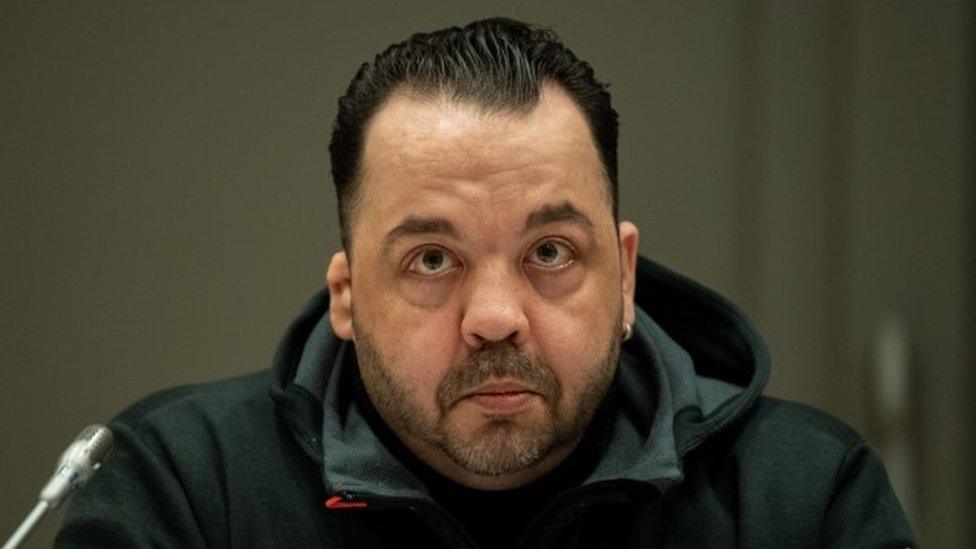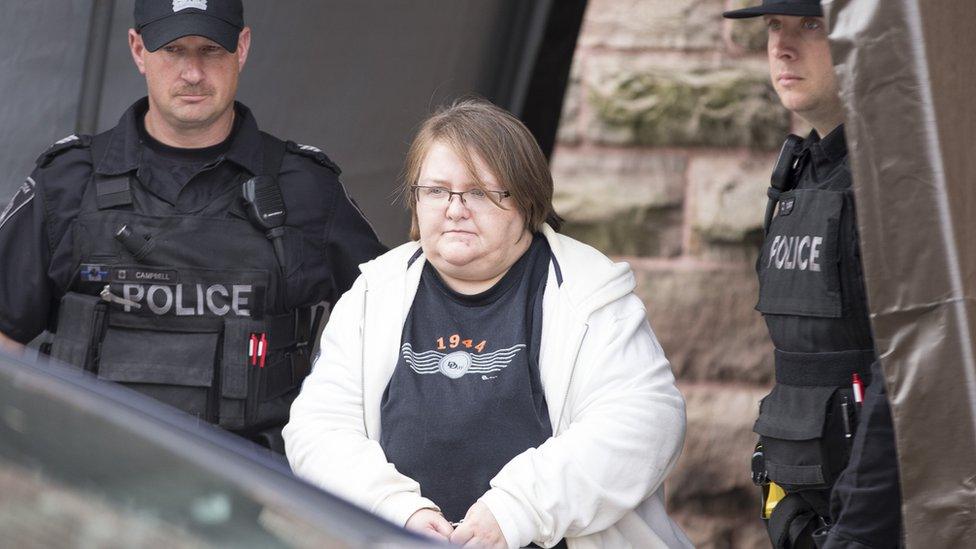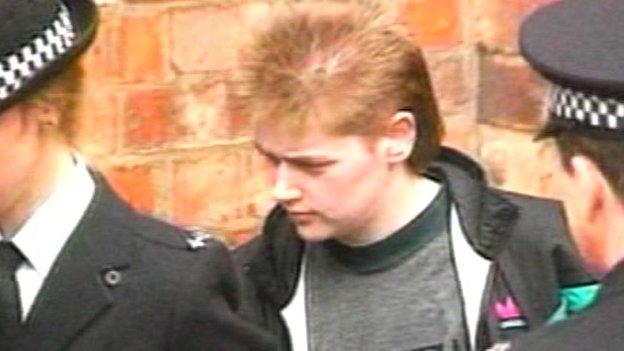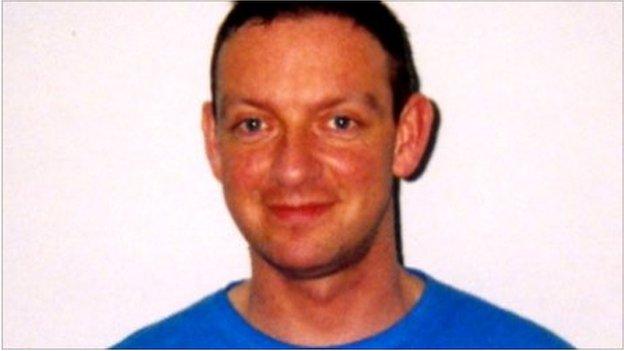Why would a nurse become a serial killer?
- Published

Niels Högel could have killed far more than the 85 patients he was convicted of murdering
When former nurse Niels Högel was convicted of murdering 85 patients at two German hospitals, he became what is thought to be the country's most prolific peacetime serial killer.
Högel, who was jailed for life on 6 June, is the latest in a long list of healthcare professionals put in prison for taking the lives of those in their care.
One simple question arises above all else in the case of Högel and others like him: Why did they kill?
Offenders rarely talk, and even when they do, "we should be cautious about believing them," said Elizabeth Yardley, Professor of Criminology at Birmingham City University.
An offender may claim to have taken a patient's life to end their suffering.
This is how American nurse Charles Cullen, who admitted killing at least 29 patients, explained his behaviour, although this was discredited as some of his victims were in recovery.
"Their words are not truths but performances," Prof Yardley said.
Others may kill in order to get rid of what they see as difficult patients.
In a confession, Canadian killer nurse Elizabeth Wettlaufer described feeling deep anger at her eight victims, whom she injected with fatal doses of insulin.

Elizabeth Wettlaufer admitted to killing eight elderly patients
Her first victim was James Silcox, an 84-year-old patient who struggled with dementia. He was killed in September 2007.
"That evening I got the urge to overdose James," Wettlaufer wrote.
"At approximately 7:30 pm I decided to overdose him with insulin, hoping he would die."
'Hero syndrome'
Criminologist David Wilson said Högel showed signs of Munchausen syndrome by proxy.
This refers to a form of child abuse where carers deliberately induce or fabricate illnesses in children to seek personal attention.
Prosecutors said Högel attacked patients in order to impress colleagues by subsequently trying to revive them. He even earned the nickname "Resuscitation Rambo."
Katherine Ramsland, a professor of forensic psychology, said there are differences in why a doctor might kill, in comparison to a nurse.
Doctors often kill "from the desire to feel a godlike sense of power over patients or from experimental curiosity," Prof Ramsland said.
"Nurses, on the other hand, often feel put upon and undervalued," she added.
"Their killing sprees appear to have other motives, such as gaining attention, finding a small realm of power in an otherwise powerless world, assuaging depression, paying back an unfair system, and acting out to relieve frustration or workload."
Christian Marbach's grandfather was killed by Högel
Kenneth V. Iserson, author of Demon Doctors: Physicians As Serial Killers, said the doctors he studied "all seemed to feel that everyone in the world existed only for their own benefit."
What are the red flags?
Prof Ramsland outlined a 22-point checklist of 'red flags' that have been associated with healthcare serial killers.
These include predicting when a patient will die, moving from one hospital to another, preferring nightshifts, trying to prevent others from checking their patients, and being associated with incidents at other hospitals.
Although a few of these would not be alarming in isolation, Prof Wilson said a "cluster" of five or more would be a cause for concern.
Cullen displayed half of the 22 traits, according to a report by Prof Wilson and Prof Yardley.
When serial killing medical professionals are finally unmasked, it becomes clear that many people recognised red flags along the way, Prof Iserson said.
But he adds: "Some of the perpetrators got away with multiple murders simply because authorities in various jurisdictions did not communicate with each other."
Nurse shortages in the UK and the US have also been cited as a reason for proper checks being overlooked.
'Entitled to kill'
Whether healthcare serial killers enter the field in order to kill - or fall into it - is difficult to say.
A "rare few" enter the profession to become "angels of death," while many transform into killers on the job, Prof Ramsland said.
Prof Yardley said it was often a combination of the two.
"These are individuals who will have obtained a sense of power and enjoyment from harming people in the past and see opportunities to escalate this behaviour in a hospital when they become aware of the access and opportunities that this setting affords," she said.

Nurse Beverley Allitt was sentenced in 1993 for murdering four children and attacking nine others
An example of this would be Beverley Allitt, who killed, attempted to kill, or seriously harm 13 children in her care within an 8-week period in Lincolnshire in 1991, Prof Yardley said.
Allitt had demonstrated particularly controlling and coercive behaviour towards an ex-partner before killing children.
Most importantly, Prof Yardley said medical serial killers choose to kill because of the feelings of power and control that it gives them.
"These people have control over life and death. They feel a sense of ownership, possession and control over their patients," she said.
"They feel entitled to harm and kill them."
- Published15 December 2014

- Published30 October 2018

- Published12 February 2014

- Published6 June 2018
